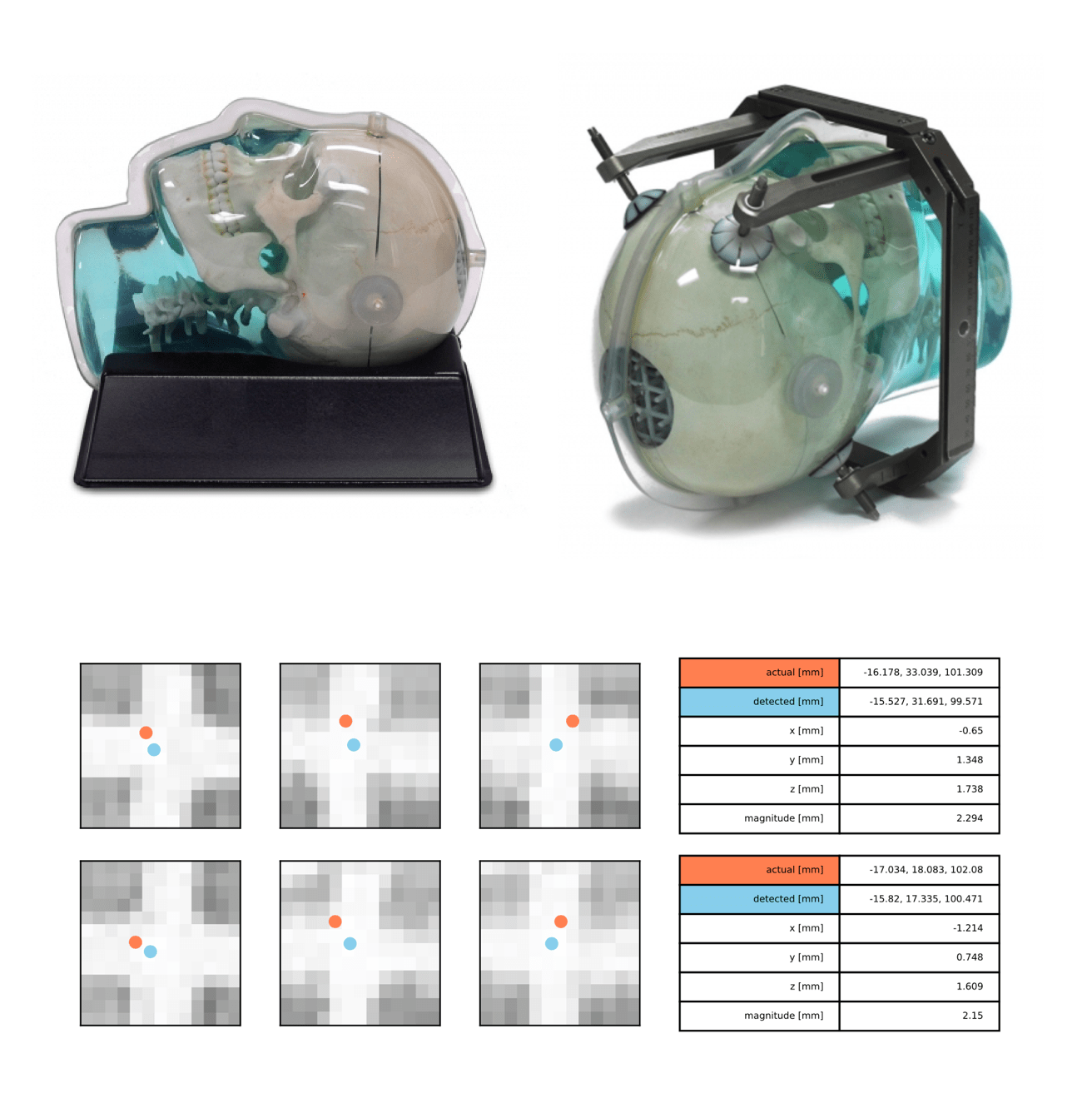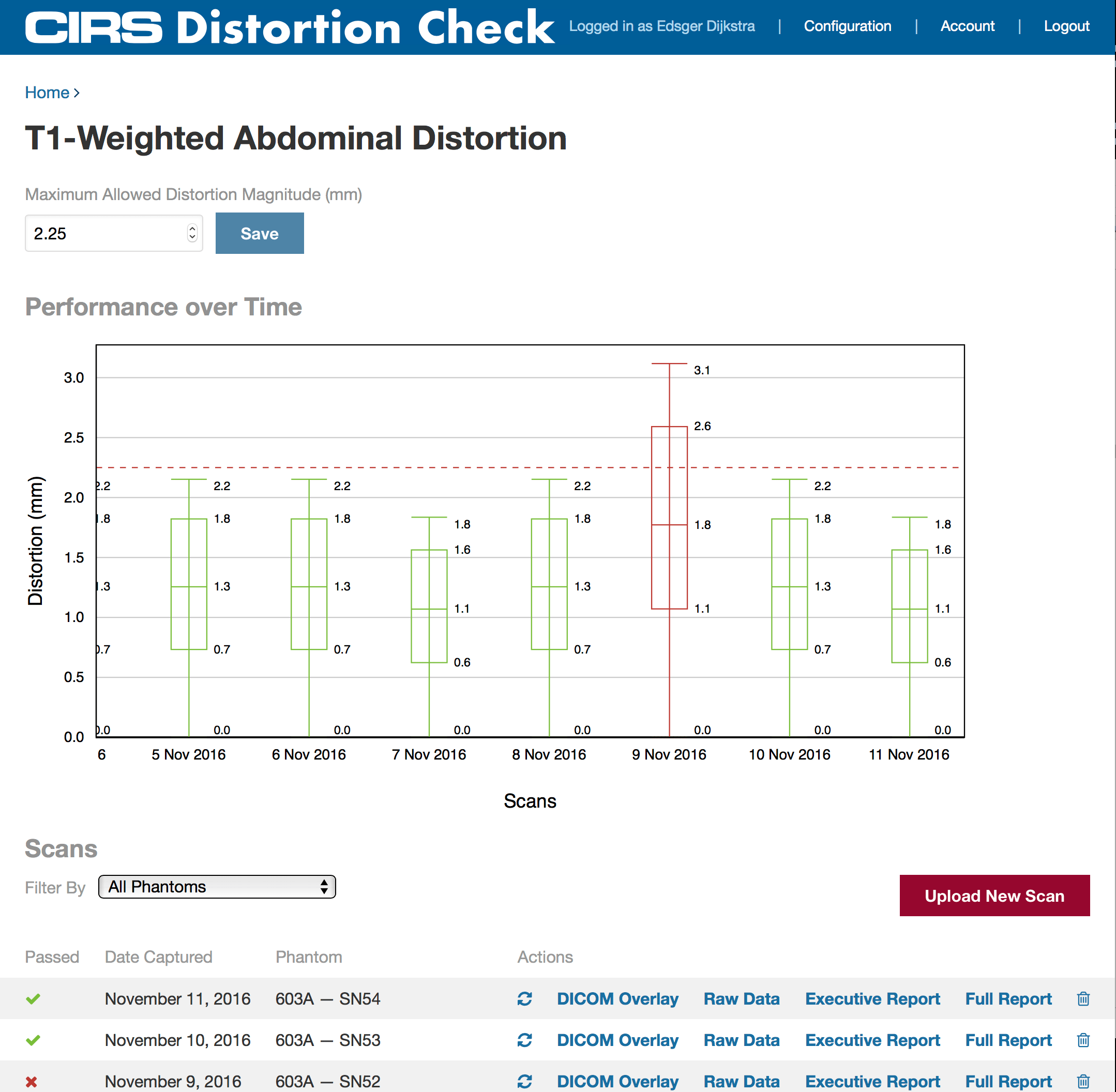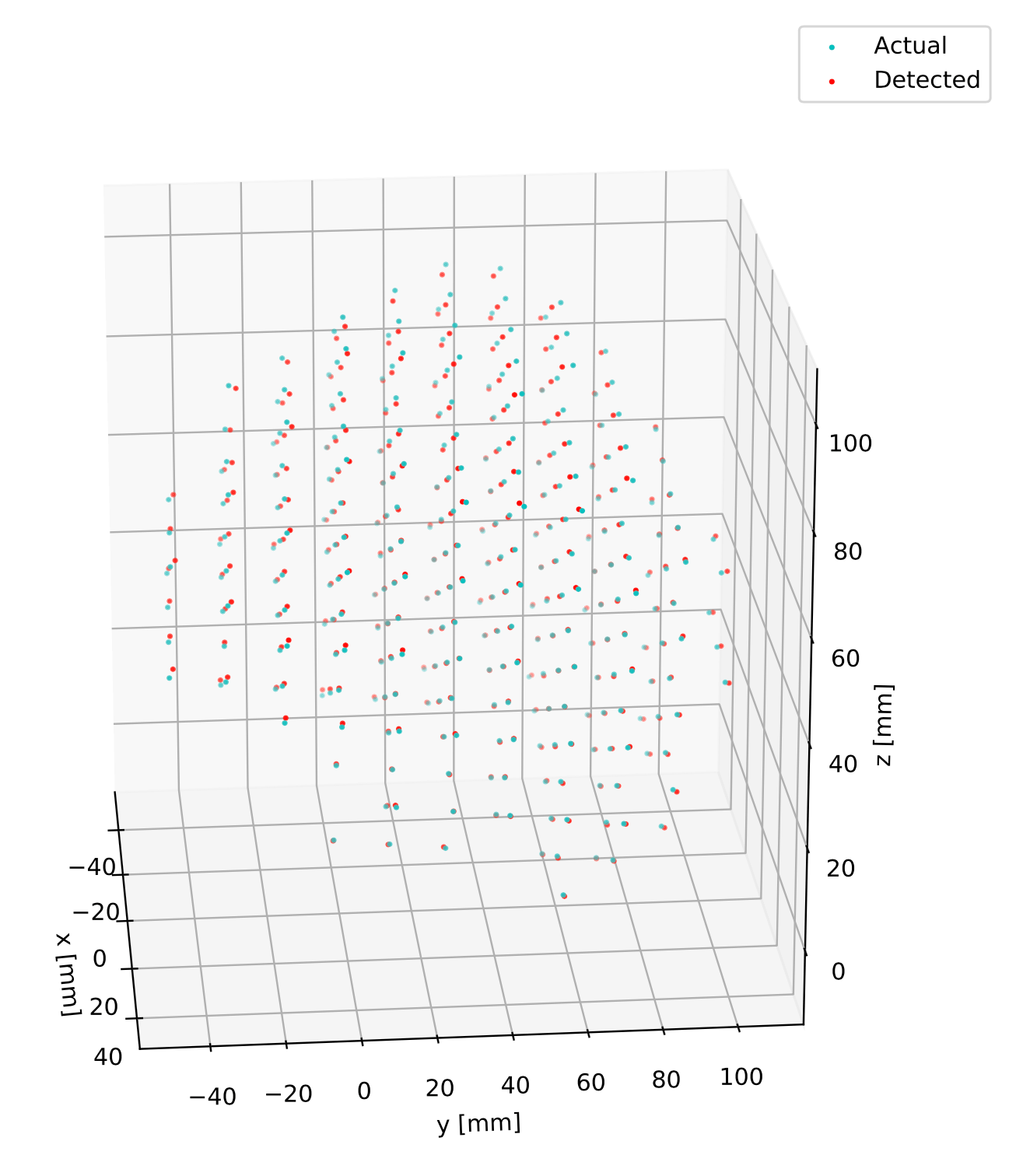CIRS (Now Sun Nuclear)
I worked with Innolitics to develop an application that analyzes MR images of our geometric distortion phantoms. It was a quite challenging image-processing project. In the end my company and Innolitics team were able to meet the challenge and built a quality web UI and a robust analysis pipeline. Innolitics seems like a company that is run by engineers who care about doing quality work.Mircea Lazea
Technical Product Manager - Therapeutic Physics at Mirion Medical
MRI scanners introduce geometric distortion into their images. This distortion, which can be as much as several millimeters, is problematic when the image is being used for radiation therapy or precision neurosurgical planning.
CIRS builds several grid phantoms for geometric distortion characterization. We collaborated with CIRS’s engineering team to design and develop software to characterize an MRI scanner’s geometric distortion and track it over time.
Our role on the project involved:
Through out the project we worked closely with the CIRS engineering team.
We developed an open-source fast implementation of 3D natural neighbor interpolation for this project. You can see the source code here.



Used with MRI Grid phantoms, Distortion Check software quickly and automatically quantifies distortion in MRI images. Simply scan the phantom, upload images, review reports and trend analysis, and export DICOM overlays.
The software registers either a ground truth CAD or CT scan to the detected control points. An interpolation is then performed to generate the 3D distortion vector fields.
Results can be reported in a variety of output formats including scatter plots, contour plots, box and whisker plots for trending, and DICOM overlays that can be exported to third-party software.
Every great partnership starts with a conversation. Fill out the form below for a discovery call, and an Innolitics team member will contact you soon.